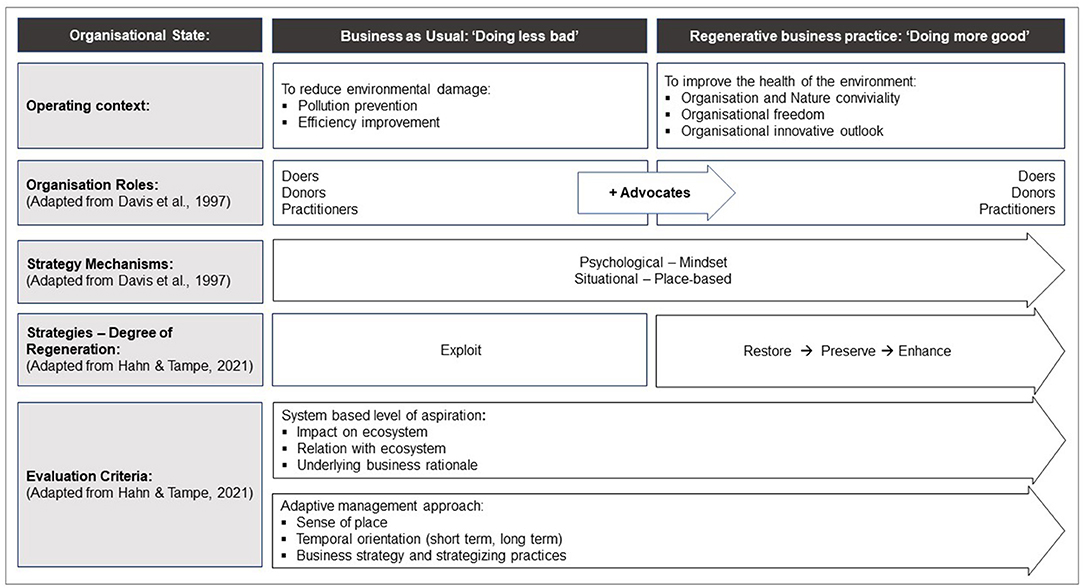Revitalizing Commerce: Embracing Regenerative Business Models


Transformative Paradigm: The Essence of Regenerative Business Models
In the quest for sustainable and responsible business practices, regenerative business models have emerged as a powerful paradigm shift. This article delves into the core principles of regenerative business, explores its impact on various industries, and discusses how businesses can integrate these models to foster environmental and social well-being.
Understanding Regenerative Business
At its essence, regenerative business goes beyond sustainability, aiming not just to minimize harm but to actively contribute to the restoration and enhancement of ecosystems. It is about creating a positive impact on the environment, society, and stakeholders. Regenerative business models prioritize the regeneration of natural resources, the well-being of communities, and the resilience of ecosystems.
Eco-centric Approach to Value Creation
Regenerative business models adopt an eco-centric approach to value creation. Instead of viewing nature as a resource to be exploited, these models recognize the interconnectedness of environmental health and business success. By integrating circular economies, renewable energy sources, and ethical supply chain practices, regenerative businesses contribute to the regeneration of the planet while creating value for all stakeholders.
Regenerative business models are reshaping the business landscape, emphasizing environmental and social responsibility.
Circular Economies and Closed-Loop Systems
Central to regenerative business is the concept of circular economies, where products and materials are designed to be reused, recycled, or repurposed. Closed-loop systems ensure that waste is minimized, and resources are continuously cycled back into production processes. This approach not only reduces environmental impact but also fosters resource efficiency, creating a regenerative loop that benefits both businesses and the planet.
Social Impact and Community Well-being
Regenerative business models extend their impact beyond environmental considerations to encompass social dimensions. By prioritizing fair labor practices, community engagement, and the well-being of employees, regenerative businesses contribute to creating thriving and resilient communities. Investments in education, healthcare, and social infrastructure become integral components of regenerative strategies, fostering a holistic approach to business impact.
Biodiversity Conservation and Ecosystem Restoration
Recognizing the critical importance of biodiversity, regenerative business models actively engage in biodiversity conservation and ecosystem restoration. This involves initiatives such as reforestation, habitat preservation, and sustainable land management practices. By aligning business activities with ecological restoration, regenerative businesses play a pivotal role in preserving the planet’s natural balance.
Stakeholder Collaboration and Shared Value
Regenerative business thrives on collaboration and shared value creation. Engaging with stakeholders, including local communities, NGOs, and governmental bodies, becomes integral to the regenerative approach. By fostering transparent communication and partnerships, businesses can leverage collective intelligence and resources to address complex challenges, creating shared value for all involved.
Measuring Impact Beyond Profit
Traditional business metrics often focus solely on financial performance. In contrast, regenerative business models incorporate a broader set of metrics to measure impact beyond profit. Key performance indicators may include ecological footprint reduction, community well-being indices, and positive social outcomes. By aligning business goals with regenerative metrics, companies can gauge their holistic impact on the environment and society.
Overcoming Challenges and Barriers
While the ideals of regenerative business are transformative, implementation faces challenges. From shifting established norms to navigating regulatory landscapes, businesses must overcome barriers to adopt regenerative practices successfully. Developing frameworks for measurement, establishing industry standards, and educating stakeholders are crucial steps in overcoming these challenges and fostering widespread adoption.
Technology as a Catalyst for Regeneration
Technology plays a pivotal role in advancing regenerative business models. From innovative solutions for sustainable agriculture to blockchain-enabled supply chain transparency, technology acts as a catalyst for positive change. Integrating emerging technologies allows businesses to enhance their regenerative impact and streamline processes that contribute to environmental and social well-being.
The Path Forward: Embracing Regeneration
In conclusion, regenerative business models offer a promising path forward for businesses seeking to be agents of positive change. By embracing regeneration as a core principle, businesses can contribute to the restoration of ecosystems, the well-being of communities, and the creation of shared value. As the world faces environmental challenges, regenerative business models stand as beacons of hope, showcasing a harmonious and sustainable approach to commerce that goes beyond profit to leave a lasting legacy of regeneration.







